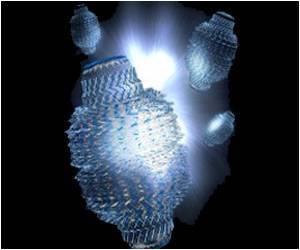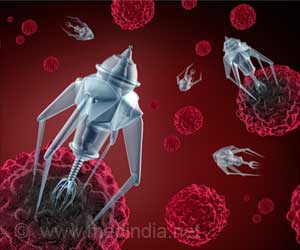Nanotechnology has been reported to promote substantial weight loss with reduced side effects in animal models
- Over the last 50 years, the prevalence of obesity has steadily increased, putting an increasing number of people at risk of obesity-related co-morbidities
- Cationic nanomaterials can target fat cells and aid in weight loss //
- Using positively charged nanomaterials, the fat cells are prevented from growing because they use polycation to scavenge pathogens methodology
Nanotechnology-Based Strategies for Treatment of Obesity, Cancer and Anti-microbial Resistance: Highlights of the Department of Science and Innovation/Mintek Nanotechnology Innovation Centre Biolabels Research Node at the University of the Western Cape
Go to source). Obesity prevalence has steadily increased over the last five decades, and obesity may have a massive effect on quality-adjusted years of life. Obesity is also strongly linked to an increased risk of all-cause, cardiovascular, and cancer mortality. Despite the serious consequences of obesity, losing weight can significantly reduce the risk of the majority of these comorbid conditions. Comorbidities most closely linked to obesity must be identified in order to raise awareness of potential negative outcomes. This will enable health-care workers to identify and implement appropriate interventions to reduce patient risk and mortality (2✔ ✔Trusted Source
The medical risks of obesity
Go to source).
Fat cell development, which begins with a tiny fibroblast-like precursor, not only activates the fat cells' particular genes but also causes them to enlarge by accumulating more lipids (in adipocytes and adipose tissue). In reality, lipid storage is a fat cell's defining role. However, excessive lipid storage can make fat cells unhealthy and lead to obesity (3✔ ✔Trusted Source
Cell biology of fat storage
Go to source).
Cationic Nanomaterials to Target Fat
Two new experiments from Columbia Engineering and Columbia University Irving Medical Center (CUIMC) researchers may hold the key to targeting fat cells depot-specifically and safely. This technology involves the use of cationic nanomaterials that can target specific locations of fat and prevent the harmful buildup of larger fat cells. The materials modify fat instead of destroying it, like liposuction does.The team of researchers, led by Li Qiang, associate professor of pathology and cell biology at CUIMC, and Kam Leong, Samuel Y. Sheng professor of Biomedical Engineering and Systems Biology at CUIMC, discovered that adipose tissue contains a large amount of negatively charged extracellular matrix (ECM) that is used to hold fat cells. They reasoned that this negatively charged ECM network could serve as a sort of freeway system for positively charged molecules. So, they treated obese mice with a positively charged nanomaterial called PAMAM generation 3 (P-G3). The P-G3 propagated quickly throughout the tissue, and the researchers were ecstatic that their strategy for selectively targeting visceral fat had worked.
Challenges in Targeting Fat Cells
The lives of a lot of individuals will be simplified if scientists can target fat cells and securely decouple harmful fat accumulation from healthy fat metabolism. A significant obstacle in the treatment of obesity is that fat tissue, which is not continuous throughout the body but is found piece by piece in "depots," has been difficult to target in a depot-specific, precise manner.There has never been a mechanism to selectively treat visceral adipose tissue and contemporary subcutaneous fat treatments, such as liposuction, that are invasive and destructive.
Effect of P-G3 on Fat Cells
Then something strange happened: P-G3 turned off the lipid storage mechanism in fat cells, causing the mice to lose weight. This was completely unexpected, considering the well-established role of P-G3 in neutralizing negatively charged pathogens, such as DNA and RNA cell debris, in order to reduce inflammation."Our approach is unique--It departs from the pharmacological or surgical approaches," says Qiang, who specializes in obesity and adipocyte biology. "We used cationic charge to rejuvenate healthy fat cells, a technique no one has ever used to treat obesity. I think this novel strategy will open the door to a healthier and safer reduction of fat".
The researchers noticed in these two tests that the cationic substance, P-G3, could do an interesting thing to fat cells: while it assisted new fat cell development, it also uncoupled lipid storage from fat cell housekeeping tasks. Because it prevents larger fat cells from storing harmful lipids, the mice had more metabolically healthy, youthful, tiny fat cells like those found in newborns and athletes. The researchers discovered that this uncoupling function of P-G3 is also present in human fat biopsies, indicating the possibility of translation in humans.
"With P-G3, fat cells can still be fat cells, but they can't grow up," said Leong, a pioneer in using polycation to scavenge pathogens. "Our studies highlight an unexpected strategy to treat visceral adiposity and suggest a new direction of exploring cationic nanomaterials for treating metabolic diseases".
P-G3 for Drug Delivery, Gene Therapy, and Aesthetics
Leong and Qiang see various possibilities for their ability to selectively target visceral fat. The biomaterials study reveals a straightforward approach that might be employed for aesthetic objectives; similar to Botox, P-G3 can be injected locally into a specific subcutaneous fat depot. The researchers, who have filed patents, are currently modifying P-G3 to improve its efficacy, safety, and depot specificity.What the researchers are most enthusiastic about is transforming P-G3 into a platform that can deliver medications and gene treatments to specific fat depots. Thiazolidinediones (TZDs), a potent but risky medicine that is a strong fat regulator and is used to treat type 2 diabetes—but has been linked to heart failure and is banned in many countries—could be repurposed as a result of this.
"We’re very excited to discover that cationic charge is the secret to targeting adipose tissue," Qiang said. "We can now shrink fat depot-specifically—anywhere we want—and safely without destroying fat cells. This is a major advance in treating obesity".
With this new technology in sight, obesity and other linked co-morbidities can be managed with ease.
References:
- Nanotechnology-Based Strategies for Treatment of Obesity, Cancer and Anti-microbial Resistance: Highlights of the Department of Science and Innovation/Mintek Nanotechnology Innovation Centre Biolabels Research Node at the University of the Western Cape - (https://www.mdpi.com/2076-3417/12/20/10512)
- The medical risks of obesity - (https://pubmed.ncbi.nlm.nih.gov/19940414/)
- Cell biology of fat storage - (https://pubmed.ncbi.nlm.nih.gov/27528697/)
Source-Medindia









